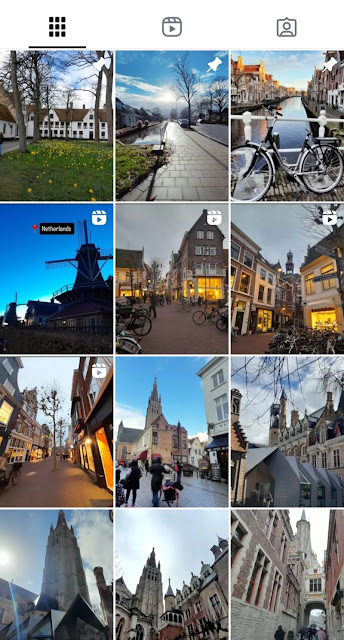The rise of hashtag#SocialMedia influencers –
You see it yourself, on hashtag#Instagram and hashtag#YouTube, to name some. Pictures of your cities so mesmerizing that they can't wait to visit, short video hashtag#blogs and hashtag#reels about localities, logistics, and events so informative that they don’t need to buy a traditional travel planner book or visit tourism website.
Influenced by these; before city administration knows and gets a chance to plan and prepare for what's coming their way; millions of people already bookmark or make up their mind to visit their city in the next 1 to 5 years, many coming this summer or winter itself.
It's not only limited to hashtag#tourists, but social media influencers successfully influence and shape behaviour of hashtag#locals as well, in turn impacting how your city functions on a day-to-day basis.
hashtag#Food, hashtag#travel and hashtag#lifestyle bloggers, help make certain neighbourhoods, streets, markets so popular that it starts attracting much more footfall and traffic to these localities than originally planned and envisaged, with imaginable externalities (increased economic activities, traffic congestion, parking woes and noise issues etc). Scores of people plan to come there on weekends and weekdays alike as everyone wants to take the heavenly bite from the overnight popular eatery and hashtag#viral food truck.
High visibility of such neighborhoods in turn also impacts the real estate prices (it may go in any direction, but mostly increase in prices); pressure on regulatory front can also be witnessed (need or demand for change in adjoining land usage) etc.
The power of informal sector –
No one thought while planning cities that less regulated activities like social media, would emerge to have so much power that it may influence the city functionality, at a scale that could be visible.
Social media influencers must be considered an important stakeholder segment today in hashtag#urbanmanagement, if you want your city to function well, also if you want to rebrand and reposition your city.
What hashtag#CityAdministrations can do –
-Talk to them, engage with them, if needed empanel them in numbers, create an ecosystem
-Use their platforms as an augmentation of city’s informal communication channel, and latent branding tool
-Take their help in driving traffic and footfall to less popular areas of city, cultural segments, itinerary or excursion
-Plan better, plan with flexibility in mind, plan with statutory agility.
Non traditional actors of cities have started to take center stage, and cities must pay attention!
Author: Anoop Jha
Founder, Urban Tenets,
Netherlands
We have seen a spectrum of mature and emerging markets for products ranging from limited edition to premium, budget, second-hand, vintage, to the end of first/second/third life, but the spectrum is not complete yet.
Take the case of automobiles. A car can be a limited edition, budget-friendly, and can find its way to the second-hand and vintage market. Its components can also find utility in their second and third lives. But how much percentage of the original price will you get if you buy a car from a showroom and try to sell it the same day? In terms of material, functionality, aesthetics, etc., the car remains, say, 99% the same as when it was sold via a showroom, but its perceived value depreciates manifold in a matter of a few hours, days, and a month after its showroom sale (5 to 30%).
To make this idea appear more legitimate, there are evaluators, insurance agencies, business literature, and marketing gurus who will make you believe that the car’s tangible value has depreciated significantly and that it must find its way to the second-hand market. A day-old car and a 5 year-old car both belong to the second-hand market and remain at the mercy of speculators. The car is just one example, but there is a missing formal market for products that are virtually and technically as good as new. Consequently, products experience a sudden drop in perceived value as soon as they change hands, prompting borderline consumers to opt for a new one instead, hence adding more burden to resources and the environment.
The case of supermarkets and fulfillment centers is no different. Consumers, in search of value for money, righteously want products exactly as displayed and promised in advertisements. The result? A minor dent on packaging or product, and the product goes to the waste bin. We are talking about millions of such products going to waste bins daily. FMCG and F&B products of varying value, shelf life, and embodied energy, whether edible or otherwise, face cosmetic rejection and end up in waste bins and landfills because there is a missing formal market, mechanism, and buyers for such products.
The solution is not very difficult. The first point of sale, i.e., brands, delivery agencies, supermarkets, fulfillment centers, etc. should come to an arrangement with potential and latent consumers based on self-disclosure about the extent of cosmetic damage, backed by legitimate valuation in depreciation, to sell such products through a dedicated section of their existing sales channels, websites, apps, and stores. This will only enhance the sustainability quotient and brand value of businesses, allow consumers to get a fair deal and make sustainable decisions, and result in lesser wastage, a lower environmental footprint, and reduced resource consumption.
Author: Anoop Jha
Founder, Urban Tenets
hashtag#Netherlands
https://urbantenets.nl/


